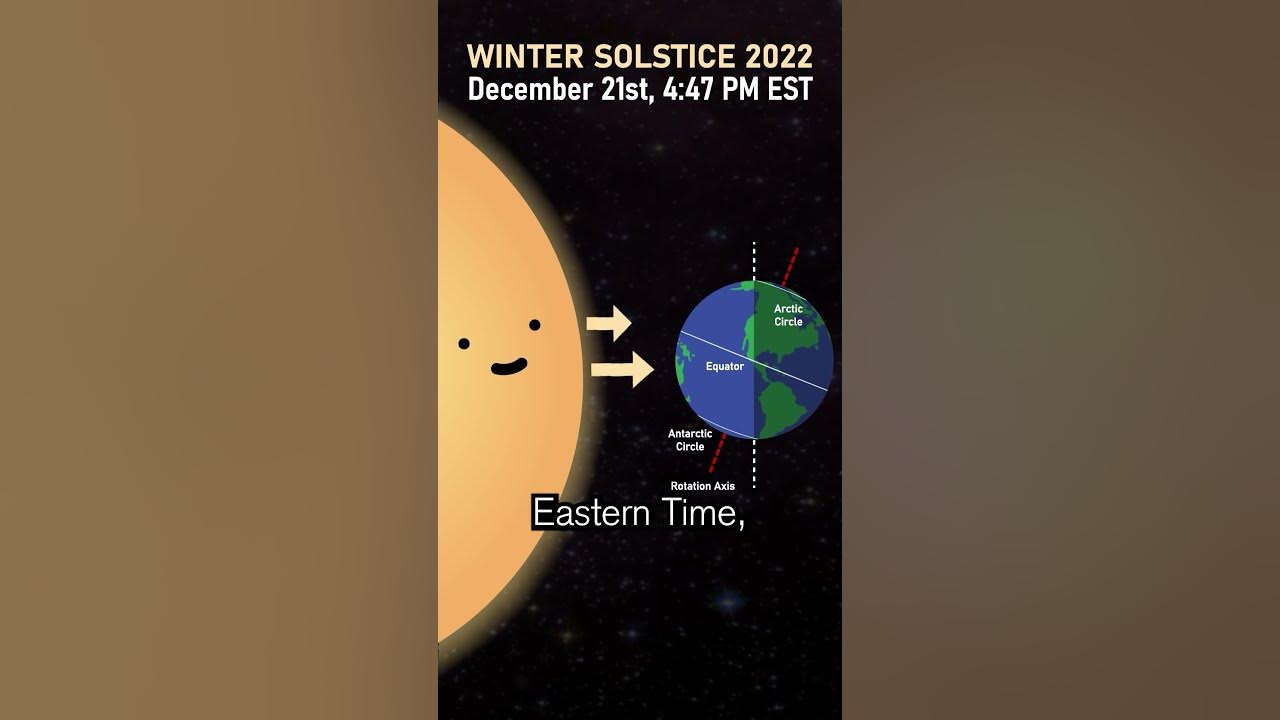


Every year, the Northern Hemisphere experiences the arrival of winter on the winter solstice, which marks the shortest day and longest night due to the Earth's tilt on its axis. As the North Pole is furthest from the sun, it receives the least amount of sunlight, resulting in a gradual lengthening of days towards the arrival of spring. This year, the winter solstice falls on December 21 and will be celebrated by people worldwide in various ways to mark the significant celestial event.
Winter Solstice: The Shortest Day of the Year
The winter solstice is an astronomical event that occurs annually when the Sun reaches its lowest point in the sky as seen from Earth's Northern Hemisphere. This results in the shortest day and longest night of the year.
Background
The Earth's axis of rotation is tilted away from the Sun. This tilt causes the Northern Hemisphere to experience seasons as it revolves around the Sun. During the winter solstice, the North Pole is tilted away from the Sun, receiving the least amount of sunlight. As a result, the Northern Hemisphere experiences its shortest day and longest night.
The winter solstice typically occurs around December 21 or 22 in the Northern Hemisphere. This year, the winter solstice will occur on December 21, 2023.
Celebrations and Traditions
The winter solstice has been celebrated by cultures around the world for centuries. Common traditions include:
In modern times, people continue to celebrate the winter solstice in various ways, such as:
Frequently Asked Questions
1. What causes the winter solstice?
The winter solstice is caused by the tilt of Earth's axis of rotation.
2. What is the shortest day of the year for the Southern Hemisphere?
For the Southern Hemisphere, the winter solstice occurs around June 21 or 22, marking the shortest day and longest night of the year.
3. How long is the shortest day of the year?
The length of the shortest day of the year depends on latitude. At the Arctic Circle, it can be as short as 24 hours, while at the equator, it is approximately 12 hours.
4. How does the winter solstice affect the weather?
The winter solstice does not directly affect the weather, but it does mark the astronomical beginning of winter.
5. What other astronomical events are related to the winter solstice?
The winter solstice is part of a larger cycle of astronomical events known as the solstices and equinoxes. The solstices are the two days each year when the Sun reaches its highest or lowest point in the sky, while the equinoxes are the two days each year when day and night are equal in length.

A bone box with the inscription "James, son of Joseph, brother of Jesus" was recently put on display in Atlanta, Georgia. The box is believed to have once held the remains of James the Just, brother of Jesus, making it the oldest physical evidence of Jesus. Despite some controversy and accusations of forgery, the box has been declared authentic by experts.

As the winter solstice approaches on December 21st, the Northern Hemisphere will experience the shortest day and longest night of the year. This natural phenomenon has captivated people for centuries, with ancient traditions and festivals taking place around the world. Through science, we can understand why this occurs and how it affects different regions of the world differently.

In a miraculous surgery, doctors at Kurnool Government General Hospital successfully removed a one-foot stick from the stomach of a 12-year-old boy who had fallen from a tree and suffered an abdominal injury. The head of the Paediatrics Department, Dr Shiva Kumar, along with doctors from the orthopaedic and anaesthesia departments worked together to perform the three-hour long surgery. The patient, Irfan, is now able to walk on his own and is expected to make a full recovery in a month.

NASA has released stunning new images of two nearby star clusters that resemble a wreath and a Christmas tree. These clusters, known as NGC 602 and NGC 2264, are located in the Small Magellanic Cloud and are made up of young stars. The images were created by combining data from NASA's Chandra X-ray Observatory and James Webb Space Telescope. As we celebrate the winter solstice, take a moment to marvel at these cosmic Christmas decorations.

Vladimir Putin's announcement about the development of a cancer vaccine in Russia has stirred up a wave of hope among patients and experts alike, with its promised release for general use as early as 2025. As the world grapples with the devastating effects of cancer, the Russian vaccine, developed with the help of AI technology, could potentially revolutionize the way we understand and treat the disease. However, with other countries also racing to develop their own versions of cancer vaccines, the competition is stiff, and the details of Putin's claim are yet to be revealed. If successful, this could mean the end of the world's biggest killer.

Indian-American astronaut Sunita Williams and her colleague Barry Wilmore have been stuck at the International Space Station for six months due to a malfunctioning spacecraft. Their rescue mission has been further delayed as NASA announced a delay in the return flight on SpaceX's Crew-9 Dragon capsule. They are now expected to spend close to ten months in space, raising concerns about their health as astronauts require twice as many calories in space due to changes in their metabolism. NASA's Commercial Crew Programme Manager has commended the SpaceX team for their efforts in preparing a new spacecraft for the mission.

Russian scientists have developed a vaccine that may be able to treat cancer, offering hope to patients who previously had no guaranteed cure. The vaccine is currently in testing and is expected to be available in early 2025. While there is still more testing to be done, pre-clinical trials have shown promising results in slowing the growth and spread of cancer. It will be available for free in Russia, but there is no information yet on which types of cancer it will treat or what the name of the vaccine will be. Similar treatments are also being developed in other countries, such as the UK.

Towana Looney, who had been on dialysis for eight years, became the fifth American to receive a gene-edited pig kidney transplant at New York University Hospital. The transplant was a success, with the kidney immediately turning a healthy color and functioning properly. This groundbreaking procedure is expected to become a lifesaving technology for many patients suffering from organ failure.

With the Gaganyaan mission quickly approaching, the Indian Space Research Organisation (Isro) has made significant progress in its preparations. All propulsion systems for the launch vehicle are ready, the crew escape system has been tested, and the crew and service modules are in the process of integration. According to the reply by Minister of State for Space Dr Jitendra Singh, the first uncrewed mission is targeted for the end of 2024, with a series of further missions set for 2025 and 2026. With all the ground infrastructure and support systems in place, India is gearing up for a historic first crewed mission in 2026.